Following the release yesterday by the ABS of the Australian Demographic Statistics for the December quarter of 2011, I decided to crunch the numbers to determine how Australia’s population and migration numbers are tracking.
According to the ABS, Australia’s population grew by 1.4% in the 2011 calendar year, which was the highest annual recorded rate of growth since March 2010, but only slightly above the 30-year average of 1.3%. How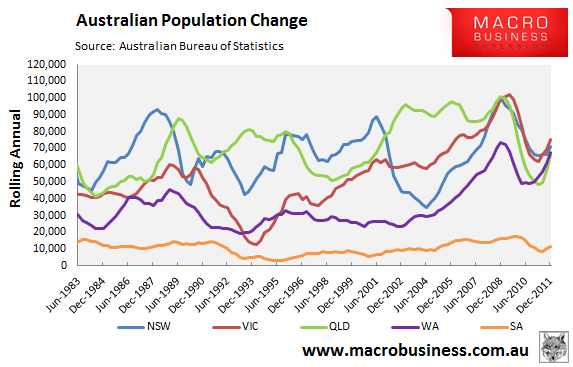 ever, the growth in the number of persons in 2011 was 302,500, which was 55,500 above the 30-year average (see below charts).
ever, the growth in the number of persons in 2011 was 302,500, which was 55,500 above the 30-year average (see below charts).
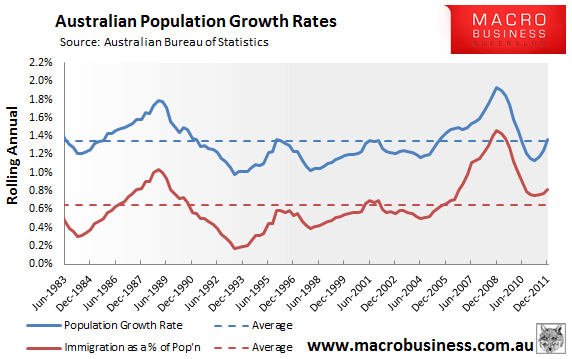
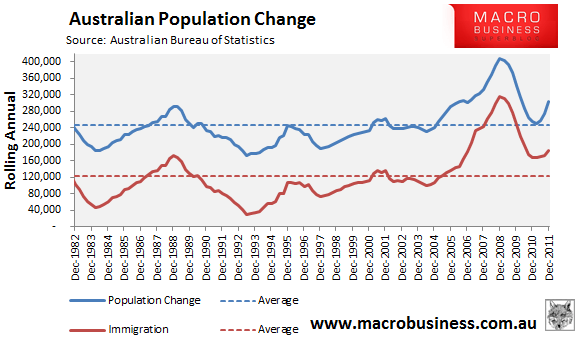
As shown above, Australia’s population growth continues to be driven by net overseas migration (NOM) – i.e. those residing in Australia for 12 months or more.
While NOM declined significantly – from a peak of 315,700 in calendar year 2008 to 184,000 in calendar year 2012 – it remains well above the average level of 123,000.
Moreover, the proportion of population growth derived from NOM – 61% in calendar year 2011 – remains well above the 30-year average of 47% (see below chart).
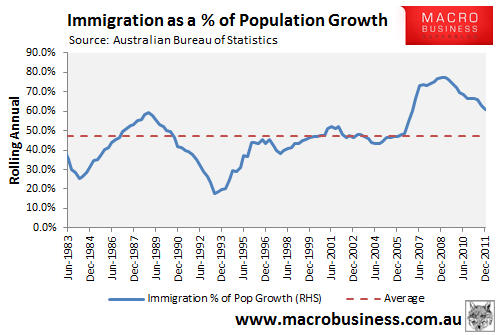
Separate data compiled by the ABS, which measures permanent arrivals/departures into Australia only, suggest that nearly two-thirds of NOM is temporary.
As shown in the next chart, the number of net permanent arrivals into Australia was 67,000 in the 12 months to April 2012, which is tracking just above the 30-year average of 66,000.
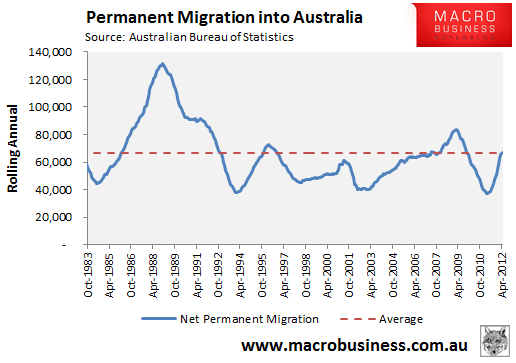
While natural increase – the difference between births and deaths – is not the key driver of Australia’s population growth, it too is running at levels well above the 30-year average. However, it has begun to trend downwards, falling from a peak of 155,100 in the 12 months to September 2010 to 145,900 in the 2011 calendar year, caused by both a decline in the number of births as well as an increase in deaths (see below chart).
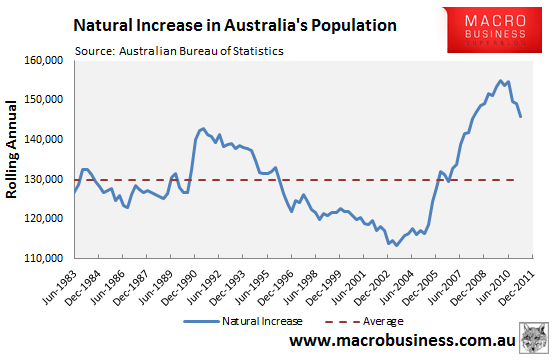
More recently, Australia’s population growth rate has been driven by migration into Australia’s key resources state – Western Australia – where population grew at a rate (2.9%) that was double the national average (1.4%) in 2011 (see below chart).
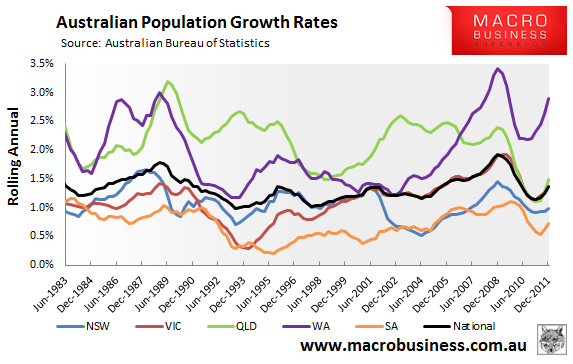
In number terms, however, population growth in 2011 was highest in Victoria (75,400), followed by New South Wales (70,982), Western Australia (67,420) and Queensland (66,493) (see below chart).


